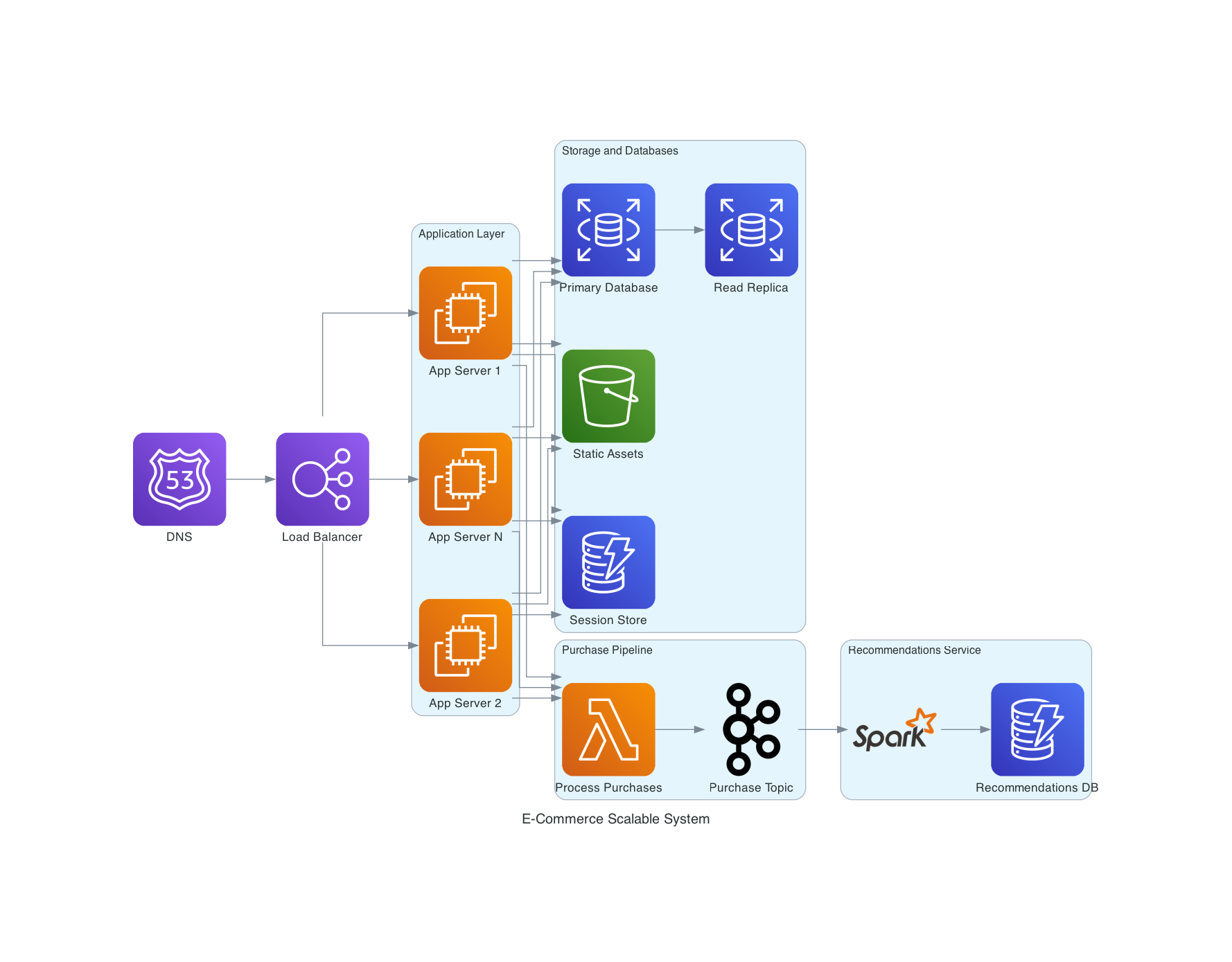Top 5 AWS Services for High Scalability Every Software Architect Must Know
With the ever-increasing demand from users and the need to handle unpredictable traffic spikes, scalability has become the biggest challenge for any Software Architect. In particular those working for a digital business catering to a global audience.
Luckily, Amazon Web Services has long evolved beyond just being an infrastructure rental company.
For many years AWS has been offering services that make architecting and deploying highly scalable systems very easy, allowing Software Architects to focus on innovative designs and building a profitable business.
So in this article, we will cover the 5 most important AWS services any software architect needs to know to build highly scalable systems on AWS.
Those 5 services are available for any company running their system on AWS.
1. Amazon ELB - Elastic Load Balancer
Amazon ELB is a fully managed load-balancing service.
It automatically distributes incoming traffic to multiple application instances.
This allows Software Architects and engineering teams to deploy any application as multiple identical copies running on different computers and route user requests to those computers using different load-balancing strategies.
Amazon ELB can operate in 3 modes:
Application Load Balancer - Layer 7 HTTP load balancing
Network Load Balancer - Layer 4 TCP/UDP load balancing
Gateway Load Balancer - Solution for routing traffic, managing and scaling 3rd party virtual appliances.
Using ELB, we can run 1000s of application instances transparently to the users, creating the illusion that they all communicate with one massive supercomputer.
Using Amazon ELB, Software Architects or engineers on-call can also monitor their application's health and performance, as all the requests and responses.
2. AWS Auto Scaling
Amazon Auto Scaling service agents run on instances of any of the following AWS services:
EC2 instances
DynamoDB
Amazon Aurora replicas
Those agents monitor and automatically adjust the capability of those services depending on policies we set ahead of time.
This allows us to increase the number of instances for a service when the load on our system is high and reduce the number of instances when the load on our system is low, which in turn reduces our costs.
Some of the metrics for Auto Scaling include:
The Average CPU utilization of a group of instances.
The average number of bytes received by a single instance in a group
The average number of bytes sent out from a single instance in a group
Average Application Load Balancer requests per target application.
3. AWS Route 53
AWS Route53 provides cross-region DNS-based load balancing and failure.
It is a global load-balancing service that helps reach users in any part of the world with consistent performance.
AWS Route 53 supports routing requests on a variety of strategies, such as:
Latency - Helps reduce latency between the user and our system
Geo DNS - Helps route traffic based on geographical locations/countries
Geo Proximity - Helps connect the users to servers that are physical closeby
Weighted Round Robin - Distributes traffic to different regions by sending a request to another region every turn.
For the complete list of policies, see this link.
Amazon Route 53 is a perfect solution for systems that offer their services to users in multiple countries/continents.
Becoming a software architect and technology leader is the ultimate goal for every software engineer. But you don’t need to wait for it to happen sometime in the far future!
In this guide, I share the 5 proven steps to becoming a Software Architect and Technology Leader today.
Use this free PDF guide to pave your path to success. Your biggest career breakthrough as an engineer is closer than you think.
4. Amazon Lambda
Amazon Lambda is a Serverless offering that allows us to provide a function written in the programming language of our choice, and AWS will run its code in response to predefined events.
Amazon Lambda automatically manages computer resources on our behalf, so we don't need to worry about the following:
OS maintenance
Capacity provisioning
Automatic scaling
Security patching
Monitoring and logging
Using Amazon Lambda, we free ourselves from managing server deployments, hiring DevOps, writing and maintaining boilerplate code or scripts, etc.
This is the most cost-effective option if we have seasonal or relatively low traffic or want to avoid managing a fully-fledged service's complexities.
5. Amazon Kinesis
Amazon Kinesis is a fully managed message broker and streaming solution allowing real-time ingesting, buffering, and streaming data.
It supports 2 modes of managing its capacity:
Provisioned - You must specify the number of shards for the data stream. The total capacity of a data stream is the sum of the capacities of its shards.
On-demand (My favorite) - Require no capacity planning and automatically scale to handle gigabytes of write and read throughput per minute
Amazon Kinesis includes the following services for different purposes:
Kinesis Video Streams - Video ingestion
Kinesis Data Streams - Data ingestion
Kinesis Firehose - Loading data to data lakes and warehouses
Kinesis Data Analytics - Data processing and analysis
If you are entirely new to the above-mentioned scalability concepts and Software Architecture building blocks, or you’d like to deepen your knowledge of Software Architecture, System Design, or Cloud Computing, check out our Software Architecture courses.
These self-paced online courses are perfect for busy engineers who want to grow their careers and become subject matter experts in Software Architecture. Check out the following link for the complete list of Top Developer Academy’s online courses.
Not ready for a course? Download the free Ebook on The 5 Proven Steps to Becoming a Software Architect and technology leader.
Becoming a software architect and technology leader is the ultimate goal for every software engineer. But you don’t need to wait for it to happen sometime in the far future!
In this guide, I share the 5 proven steps to becoming a Software Architect and Technology Leader today.
Use this free PDF guide to pave your path to success. Your biggest career breakthrough as an engineer is closer than you think.























f you're a software engineer looking to transition into a software architect role, the Certified Professional for Software Architecture – Foundation Level (CPSA-F) certification by iSAQB is an excellent way to acquire the relevant skills and also earn an internationally recognized certification.
But how exactly do you pass the iSAQB CPSA-F exam, and what should you expect from the process?
In this guide, I'll walk you through each step to get CPSA-F certified.